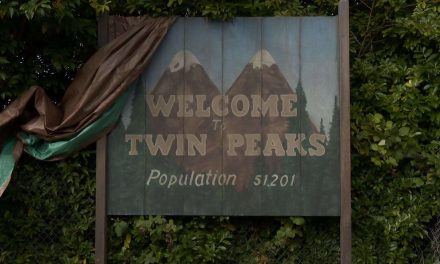Local television outlets are essential places for the development and dissemination of local content. However, if you’re in a market that is anything other than America, the capitalist side of the industry has long fought against this – with commercial broadcasters in particular looking at cheap and reliable imports rather than necessarily investing in local productions. Cue another repeat of The Big Bang Theory. There are, of course ,exceptions to this- and nothing succeeds quite like a home grown version of a game, panel or reality show- what Frances Bonner so beautifully summed up as “Ordinary Television”.
As streaming services develop their reach internationally, however, the question of where local content does (and should) lie rears its head again. While brands like Netflix are undeniably international in their scope and influence, as they enter each distinct territory their offerings are often quite different. For example, Netflix services in non-Anglophone countries like Norway tend to feature more non-Anglophone content than the US main stay – and this is unsurprising. However the individual rights barriers in English dominated regions still mean significant differences between services across countries. Although Netflix typically doesn’t publish its listings far beyond its own paywall (part of the trick to get you in) – it’s not hard to find enthusiasts with subscriptions to different region IPs who are willing to do the hard comparison work. For example, this “Library Comparison” showing us Australians exactly what we’re missing out on when compared to the US.
While it would be easy to fall down into a funk of TV FOMO (Fear of Missing Out), what these comparisons don’t acknowledge is where local content is being produced and supported by traditional broadcast and its offshoots. One of the most wonderful recent innovations in Australian television is the brilliant and innovative Cleverman –
the world’s first sci fi series to feature an indigenous Superhero. The show now features on US Netflix as part of a monthly package, but is not available via the same service for Australians. This is because the local producer, public service broadcaster ABC, housed the show on its free catchup service iView (similar to the BBC’s iPlayer). While we could argue that Australian Netflix subscribers are getting a raw deal, on the other hand – they already have access to iView anyway – so it’s not Netflix as a be-all and end-all, but just as a place to value add.
So, if local industry is still being supported by a traditional broadcast model, then do streaming services need to be concerned with local content at all? In theory, if the traditional and new models continue to work side by side, then no. However that theory is quite idealistic – threatened again by more possible cuts to the production budgets of outlets like Cleverman’s ABC. The advantage of streaming services (and the market position they have increasingly taken over), is the ability to appeal to niche and specialist audiences. Also- shock- this is where All The Young People Who Used To Watch Television In A Lounge Room Out Of A Television Shaped Box seem to have gone. These audiences are the ones where local talent can often be fostered really effectively – especially in the non-Ordinary television sense. That is, local comedy, drama and other genre-based work that employs actual actors and writers rather than product placement opportunities. From this point of view, it makes sense that streaming services, who are given the right to emerge locally, should also have some responsibility to supporting the next generation of producers for that audience.
Different countries will no doubt have different opinions about whether local quotas are appropriate or not. Again, in Australia, this is something that local screen production groups are pushing for – however there has been recent push back from big names like Netflix. A copy of Netflix Australia’s contribution to the Australian Government’s recent Screen Content Review was circulated by local magazine IF (Inside Film) recently, quoting a spokesman for the streaming in relation to a possible quota;
“Australia has talented creators whose content is already being distributed all over the globe on streaming services … but reflexive application of regulations built for a market with limited organic demand, or predicated on technical or resource scarcity, can disrupt this virtuous cycle by distorting consumer-driven content buying decisions that have spurred growth of Australian content production and global distribution.” – full report here.
The question of ‘limited organic demand’ for local content is always going to be a problem for relatively small regions like Australia – but it doesn’t solve the capitalism versus culture question. The debate over whether Netflix should be legally allowed into Australia at all lingered for a long time before the outlet formally arrived, and although the finer details were arranged eventually behind closed doors, it’s likely that similar concerns about competition of cheap international imports to an already crowded market were a key part of the delay. The outcome of the debate remains to be seen.
Dr Liz Giuffre is a lecturer and researcher in Media, Music and Cultural Studies at University of Technology, Sydney, Australia. Her work focuses on music and television in particular, including audience studies, fandom, cultural history and cultural industries in transition.




